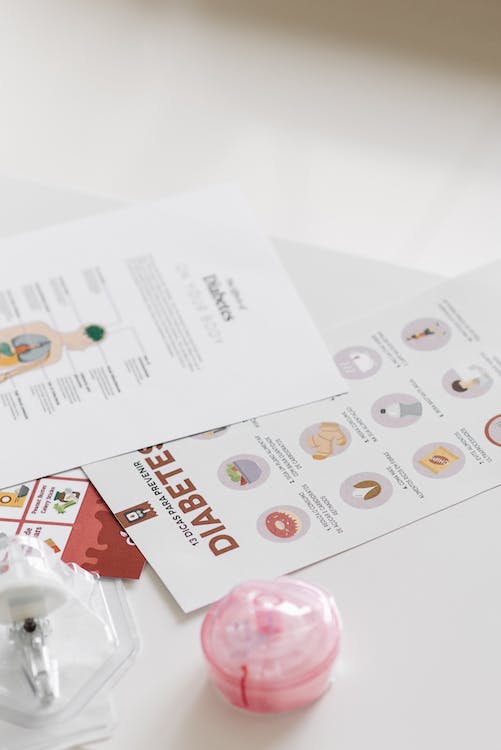Experts are always looking for new ways to make patient lives easier. There is no question about the continuous glucose monitoring systems being one of the significant developments in improving the lives of patients with diabetes in the last decade.
In the early 1900s to 1960s, blood glucose monitoring for patients diagnosed with diabetes was to test the sugar content in their urine. This method was not quite an idea since it involved heating that patient’s urine and adding a reagent tablet. Patients would use a color chart to see how low or high their sugar level was.
Fast forward to the 1960s, the finger stick test debuted but was only used by doctors in their offices. It wasn’t until the 1980s that the home finger stick test was available on the market. This allowed patients to accurately monitor their blood glucose levels in the comfort of their homes. Patients could not test their blood sugar levels daily or multiple times based on the type of diabetes they had.
The research community did not stop there. They knew that the finger test only gave a reading for a specific time and needed to have a bigger picture to manage diabetes effectively. This led to the development of the CGM, or the continuous glucose monitor, in the early 2000s. The CGM was approved by the US FDA thanks to the accuracy of its sensors.
How Do Continuous Glucose Monitoring Systems Work?
 A continuous glucose monitoring device is a small device worn on the back of the arm or the abdomen to monitor the sugar levels in the body. The interstitial fluid surrounds the sensor of the device. The sensor on the device sends information to a transmitter which then sends the data to the patient’s smartphone or any receiver of your choice.
A continuous glucose monitoring device is a small device worn on the back of the arm or the abdomen to monitor the sugar levels in the body. The interstitial fluid surrounds the sensor of the device. The sensor on the device sends information to a transmitter which then sends the data to the patient’s smartphone or any receiver of your choice.
Having a CGM device allows patients living with diabetes to always know where their blood sugar levels are and avoid emergencies. By sending an alarm, the device will alert the patient when the blood glucose levels are getting dangerously high or too low. This way, people know they should eat or drink before their blood sugar gets too low.
How Does The CGM Devices Help with Diabetes?
The Use of the CGM benefits every patient with diabetes: prediabetes, type 1 and type 2 diabetes. Continuous glucose monitoring has also been studied in people without diabetes, such as athletes, to help improve their performance.
A CGM system is beneficial even to patients who do not need insulin. The device allows people to understand how their bodies respond to food. Let’s say you eat a doughnut. You will be able to watch your blood sugar spike. A CGM device is a significant lifestyle changer for people living with diabetes.
CGMs and Insurance
Commercial insurance plans cover continuous glucose monitoring for people with diabetes. Major insurance companies such as Medicaid and Medicare have expanded their coverage of CGMs based on the compelling data of their support towards improving the lives of diabetes patients. If unsure if your insurance covers CGM, check with your insurance representative.
What Are the Benefits of Using A CGM Device?
 A CGM device makes it very easy to manage type 1 and type 2 diabetes. Here are some benefits of adding a CGM device to your diabetes plan:
A CGM device makes it very easy to manage type 1 and type 2 diabetes. Here are some benefits of adding a CGM device to your diabetes plan:
It shows a bigger picture: A CGM device measures blood sugar levels every few minutes. The data shows a complete picture of your blood sugar levels over time. This information is vital to understanding how activity, food, and stress affect sugar levels.
Alert you when your blood sugar is too low or high: A CGM device will send an alert when your glucose levels are too high or too low. This way, you can treat and prevent the highs and lows before they become a huge problem.
Reduces the number of finger sticks you need: A CGM device reduces the number of finger sticks you need daily.
Do you want to learn how to manage type 2 diabetes better? Visit Columbia Medical Continuous Glucose Monitoring Systems (CGMS). We are experts in continuous glucose monitoring devices to help you manage Type 1 and Type 2 diabetes with no finger sticks!






 We are experts in Continuous Glucose Monitoring Systems (CGMS). Our CGM devices will help you efficiently manage Type 1 and Type 2 diabetes with No Fingersticks!. Abbot’s Freestyle Libre System will track the glucose levels in your blood and help you determine how much insulin you will need and when you will need it!
We are experts in Continuous Glucose Monitoring Systems (CGMS). Our CGM devices will help you efficiently manage Type 1 and Type 2 diabetes with No Fingersticks!. Abbot’s Freestyle Libre System will track the glucose levels in your blood and help you determine how much insulin you will need and when you will need it!